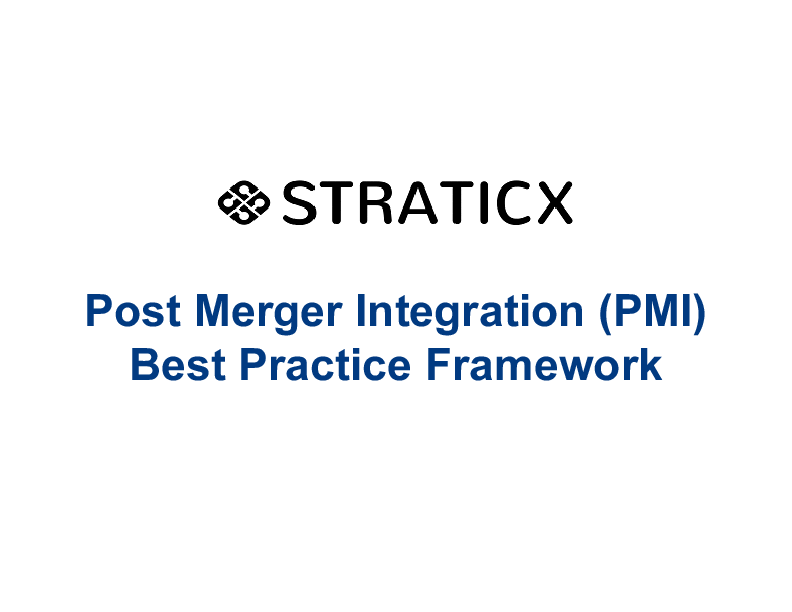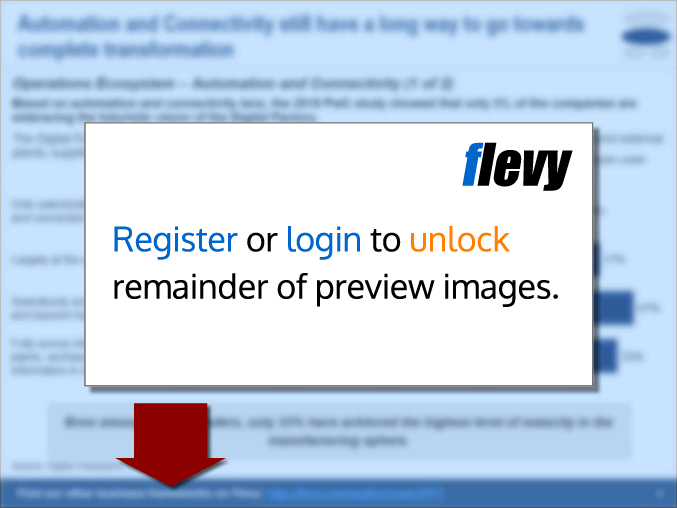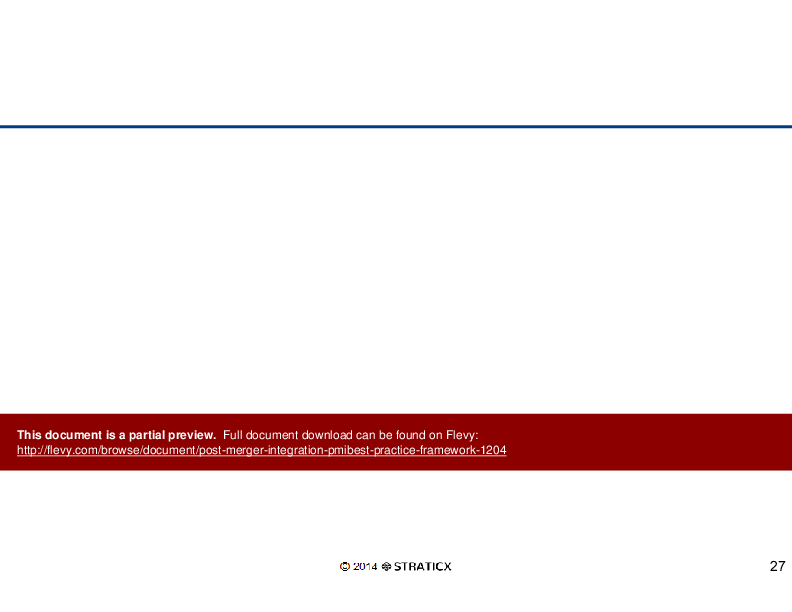Post Merger Integration (PMI) Best Practice Framework (PowerPoint PPTX Slide Deck)
PowerPoint (PPTX) 28 Slides
PMI PPT DESCRIPTION
This document provides a guide and framework for best practice in post merger integration.
Post merger integration is the process of combining two separate companies in a way that quickly creates the most value and fulfils the expectations outlined in the acquisition vision.
The framework comprises of six key steps:
1. Determine leadership, assign responsibilities and establish operating model
2. Build a strong integration structure
3. Prioritise opportunities and implement quick wins
4. Actively address cultural issues
5. Establish open, frequent and timely communication
6. Rigorously manage risks
This document is equally suitable for consultants and those in a corporate role.
This comprehensive framework also emphasizes the importance of aligning integration activities with the overarching corporate strategy. By ensuring that the acquisition strategy is at the forefront of target identification, due diligence, and final merger decisions, companies can streamline the integration process and maximize value capture. The PPT provides actionable insights into pre-merger identification and planning, helping organizations to identify and target companies with the desired capabilities, assess barriers to the deal, and create detailed plans on value capture.
The framework highlights the necessity of tailoring integration approaches based on the specific logic and focus of different divisions. Integration of overlapping business areas typically involves cost-oriented, top-down strategies, while complementary business integrations are more opportunity-driven. This differentiation is crucial for addressing the unique challenges and opportunities presented by each integration project, ensuring that the approach and timing are appropriately aligned with the nature of the synergies involved.
A key component of the framework is the establishment of a Corporate "Control Tower" to oversee the integration process. This central structure, comprising senior executives and top talent, ensures that guiding principles are adhered to and progress is actively monitored. By framing the overall integration plan, coordinating activities across business units, and maintaining consistent processes, the Control Tower drives the successful execution of integration activities, ultimately leading to the realization of projected synergies and value creation.
Got a question about the product? Email us at support@flevy.com or ask the author directly by using the "Ask the Author a Question" form. If you cannot view the preview above this document description, go here to view the large preview instead.
Source: Best Practices in PMI PowerPoint Slides: Post Merger Integration (PMI) Best Practice Framework PowerPoint (PPTX) Presentation Slide Deck, STRATICX
PMI PPT SLIDES
This document is available as part of the following discounted bundle(s):
Save %!
The Complete Kit
This bundle contains 13 total documents. See all the documents to the right.











